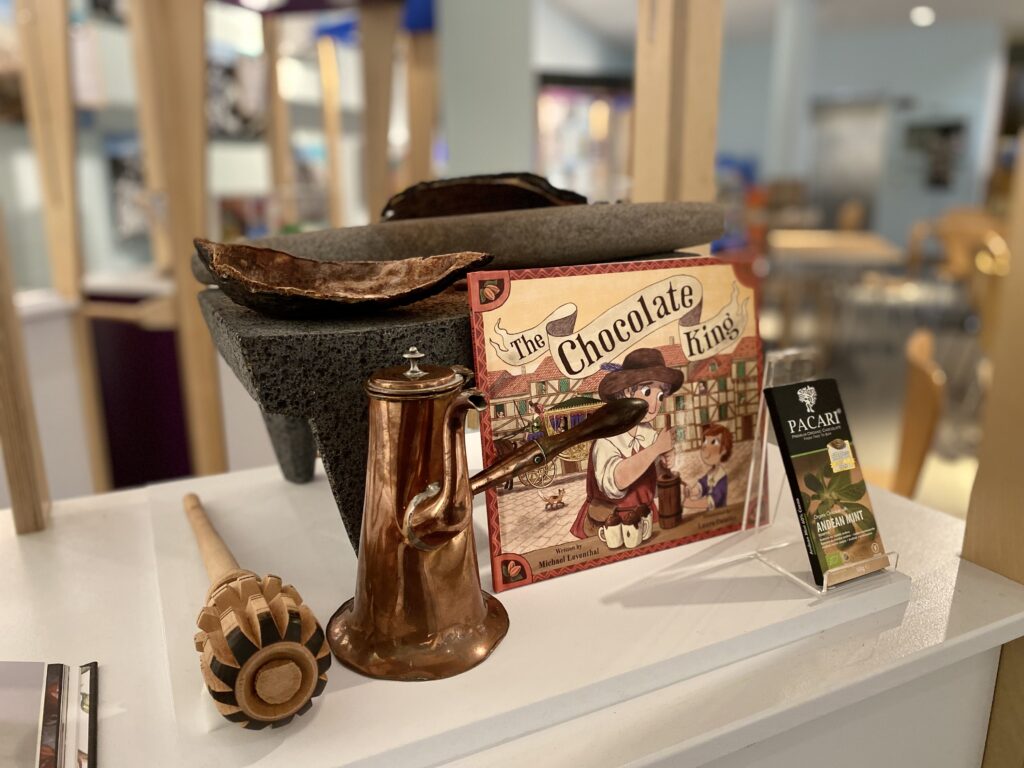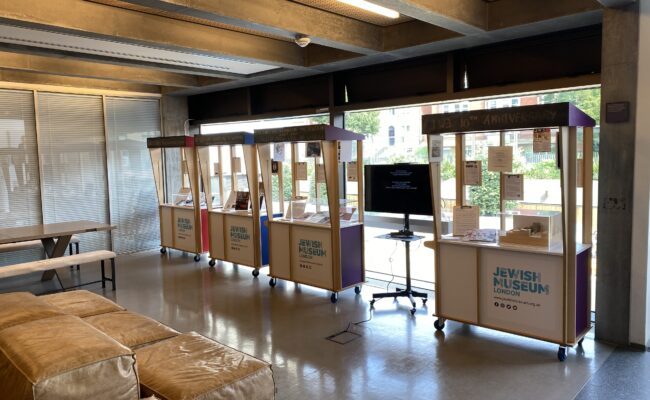A conversation between Jewish Museum London, & Michael Leventhal about Jews & the History of Chocolate

Museum: So Michael, why the interest in chocolate?
Michael: Ten years ago, I set up a Jewish food charity and festival called Gefiltefest and I’ve been interested in chocolate for a very long time. When I recently came across an article in The Jewish Chronicle I discovered that the Jewish community has been involved in the chocolate trade for more than 500 years. I’m not exaggerating when I say they played a crucial role in spreading chocolate around the globe. After reading that article, I started my research and so far, it has led to two books on Jews and chocolate.
Museum: What was your first step with your research?
Michael: The full Jewish chocolate story is detailed in Rabbi Debbie Prinz’s book ‘On the Chocolate Trail’. I should start by saying that Jews were not involved in the original discovery of chocolate – that goes back to the Olmec civilization almost 5000 years ago, Jews only got involved in the 1500s and ever since have continued to play a role in the international chocolate trade.
My children’s book explains how Jews first got involved starting with Christopher Columbus. It’s been suggested – by Simon Wiesenthal among others! – that he was Jewish, along with a third of his crew; incl. a Jewish doctor and interpreter, and his fourth trip to Honduras was partly funded by Jews. That’s where he first came across cocoa beans (though he thought they were goat droppings). Although he didn’t know how to turn them into a chocolate drink, Columbus was the first European to ever set eyes on cocoa beans and the cocoa pod.
Once the Spanish discovered what could be done with cocoa beans, they started bringing them back to Spain and the Jewish community were instrumental in those trading networks. When Jews are expelled from Spain & Portugal during the Spanish Inquisition, they took with them their knowledge of how to make chocolate. They set up a community in Bayonne, still known as France’s chocolate capital because of those original Jewish chocolate workshops. As Jews were forced to flee to different locations they set up chocolate workshops around the world; to Belgium, to England, and islands such as Curaçao and Martinique.
In certain countries they were so successful, that they were actually banned from the chocolate trade. In fact, in Bayonne, they were banned because it was regarded as such a new and lucrative profession that they didn’t want the Jewish community doing it, (though they later reversed that decree to allowed Jews to continue)
Selecting an object
Museum: Let’s move on to some of the items that you’ve chosen.
Michael: First is a molinillo, a device for creating froth that you hold upside down in your pot of chocolate. You roll it between your two hands to circulate air, creating the frothiest of chocolate that you can. For thousands of years, people have been obsessed with froth, from beer heads to cappuccino froth art. The Aztecs even believed that the froth was the holy part of the drink. The molinillo design is exactly the same as it was 1000 years ago and it’s still used today in Mexico and Spain.
Next is a beautiful, antique chocolate pot. It has a built in frother which you’d pump up and down before pouring out. It’s also got this distinctive handle coming off to the side and I love the fact that something was created purely for the purposes of making and serving frothing chocolate.
There’s also some dried out cocoa pods and beans. I find it remarkable that so many people eat chocolate, but they’ve never touched or even seen a cocoa pod. You can’t leave a fresh pod out for more than a couple of weeks but although it’s lost some of the nice shine that a fresh one has, it’s still beautiful. It’s remarkable how the Olmecs worked out how to get from this simple cocoa bean to a cup of hot chocolate How on earth did they work that out? Because if you have a fresh one they don’t taste great.
Cocoa pods can come in different colours depending on the region that they come from, but they are quite beautiful things, with their scaly exteriors. It’s extremely hard to grow cocoa – there’s a very narrow band around the equator where cocoa can grow under specific conditions – but that all adds to the mystery of these amazing things.
The metate is made from volcanic stone and is how the Maya and Aztecs would have crushed the cocoa beans. You put it down on the floor, put the beans onto the surface, and then you use all of your weight to roll the beans down to a fine powder. It’s a very simple, effective way of crushing things, and just like the molinillo people still use them. I think it’s another beautiful thing.
The final items are my books. ‘The Chocolate King’ is based on a Spanish family that’s forced to leave Spain because of the Inquisition, which is an unusual topic for children’s book. They set up a chocolate workshop in France, and eventually through some happy accident, the King of France takes this chocolate and decides it’s wonderful.
Originally when chocolate was introduced to France, most people thought it was disgusting. But eventually they started adding more flavours as well as sugar and that’s when it really takes off. So it was really my way of teaching people about where chocolate comes from whilst entertaining them at the same time.
At the back of ‘The Chocolate King’ there’s Claudia Roden’s recipe for Spanish hot chocolate. And that led to another lockdown project where I collected Jewish chocolate recipes from around the world. The result was a book of 50 recipes; ‘Babka, Boulou & Blintzes, Jewish chocolate recipes from around the world’. 100% of the money raised goes to Chai Cancer Care. And I’m delighted that it’s raised £15,000 for Chai so far.
And yes, I’ve tested most of the recipes… there was one particular weekend in lockdown when I’d recruited about 100 friends and volunteers to try out the recipes and check they worked. On one particular weekend, (and at that point, you weren’t allowed to go into people’s houses) the doorbell kept ringing because people had baked various chocolate cakes and mousse and biscuits, and they were dropping things off to us to try. So we had this insane weekend when we had at least 50 Chocolate items dropped off that lasted for weeks!
————————————————————————————————————-
To download a free Jewish chocolate history timeline visit: www.greenbeanbooks.com/timeline
